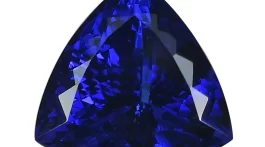When shopping for a new piece of jewelry, you are probably drawn to the beauty of the gemstone, the craft of the silversmith or goldsmith and the value of the item. Have you ever stopped to think about the age of the gemstone and just how it fits into the overall history of mankind?
Baltic Amber used in modern pieces today is approximately 30 to 90 million years old. And its use by mankind dates back to 12,000 BC when nomadic tribes of the Nesolithic age used it in their hunting rituals. The same Baltic Amber used in jewelry today is a very unique form of prehistoric fossilized tree resin. During the fossilization process, the tree resin trapped some of the flora and fauna of the time, including mosquitos, caterpillars, bees, flies, butterflies, spiders and even snails as well as wood fragments, plant leaves, flowers, dust, pyrite crystals and other minerals. Because of the variety of plant and animal material encapsulated in amber, it is often called a ‘Window to the Past’. You may remember the prehistoric reference to amber made in the movie “Jurassic Park” when dinosaur DNA was extracted from a mosquito trapped in amber. More than 1000 extinct species of insects have been identified inside amber. Amber can also contain water bubbles which change to disk-like features known as sun spangles.
Ancient Greeks called it ‘Elektron’ after its ability to produce static electricity when rubbed. The Romans also loved amber and sent their armies to conquer and control amber producing areas. Emperor Nero was a great connoisseur of amber. Early Germans called amber ‘Bernstein’ because of its aromatic properties when warmed or tossed into a fire. Worshippers of the Mother Goddess believed that amber was sacred because it contained the essence of life from encapsulated insect fragments and warmth. It was used to cleanse the air, especially during childbirth
 |
| Baltic Amber Mine in Kaliningrad. |
About one million kilograms of Baltic amber were used in jewelry between 1895 and 1900. And even into modern ages, our connection with amber remains very strong. In today’s market, the richest and most significant amber deposits are in the Baltic Sea region with the largest mine in the area west of Kaliningrad. Buried beneath a deep layer of sand, there is an alluvial layer of amber containing clay known as ‘blue earth’. Amber is mined from open pit surface mines with dredging buckets. The blue earth is washed and amber specimens picked out by hand. Many pieces of amber are then set into very unique pieces of jewelry, allowing you to own you very own ‘Window to the Past’.







No Comment